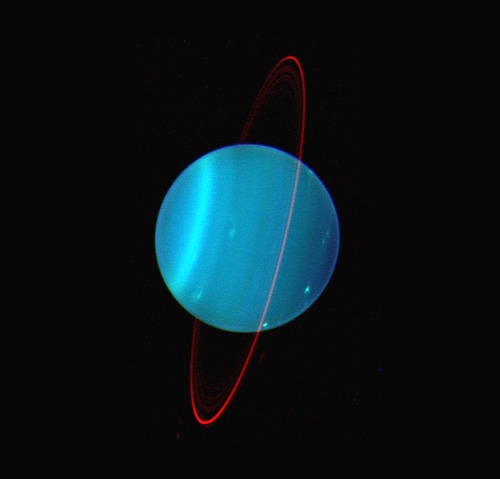“One Cannot Understand The Full Effect Of The Inspiration Just By Simply Looking At A Photograph. You
“One cannot understand the full effect of the inspiration just by simply looking at a photograph. You can only discover the genuine pleasure and intricacy that exist by being there and witnessing it with your own eyes.”
— 「최승현」Choi Seunghyun, Men’s Uno Malaysia 2016
More Posts from Delightfulskywalker and Others





Handsome Kings ♥
Hi, I need a little help. I'm 16 and few months ago started being interested in astronomy. I haven't made a big progress since then, because I don't know where to start. I'm quite good at maths, not so "strong" at physics, but I don't have lot of problems with this subject. What and where should I learn at first? (I started "brief history of time", found "crash course" and csuDH course, but didn't start them). My knowledge of astronomy is very very low, so I'd be thankful for your advice!
Hello!16 is a perfect time to start thinking about options in astronomy. Actually that was approximately the time I started to realize that astronomy/astrophysics is something I want to do in the future. :)

PLAN YOUR FUTURE!
First of all - congratulation! You´ve already started! :) You need to have an idea about what would you like to do in the future. If it is an astronomy field - excelent! Now, next step is to know your options - I don´t know where are you from, but I guess there is a university nearby which is offering a study of astrophysics. Mostly studying astrophysics at university requires GCSE or graduation in mathematics and physics and good school results - but you need to find out by yourself, because every educational system is quite different and I don´t know how it goes in your country.After you choose a university you want to study in, you should do next step which is realizing what are your options after you´ll finish university. I recommend you this website —> here <— you can read something about how to plan your education in astronomy/astrophysics and some tips. —> here <— is a website where many astronomers/astrophysicists are looking for jobs. Also you can check this site —> here<— where you can find another list of jobs in this field.
(I´ve answered similar questions not long time ago, so you should check it out >> here << and >> here << )
GET INTO IT!
The fun way to learn something about a field of astronomy is to check out astronomy websites…These are my favourite:~ NASA ~ Space.com~ ESO~ CERN~ New Scientist~ Physics-AstronomyIf you prefer something more personal, try these books:(These are not hard to understand and they will help you in the beginning)~ The Fabric of the Cosmos: Space, Time, and the Texture of Reality ~ The Elegant Universe: Superstrings, Hidden Dimensions, and the Quest for the Ultimate Theory~ The Book of Constellations: Discover the Secrets in the Stars~ The Physics Book: From the Big Bang to Quantum Resurrection, 250 Milestones in the History of Physics (Sterling Milestones) ~ Pale Blue Dot: A Vision of the Human Future in Space~ Cosmos~ NightWatch: A Practical Guide to Viewing the Universe
If you don´t have energy or if you are not in the mood for reading, try these documentaries:~ How the Universe Works~The Universe (TV series)~ Known Universe~ Cosmos: A Spacetime Odyssey~ The Age of Hubble~ The Year of PlutoI also derive benefit from youtube videos…you can find many documentaries there and also many astonishing animations, tutorials and even whole lectures which can help you with better understanding math/physics/astronomy problems.~ Astronomy lectures~ Physics lectures~ Math lectures~ Astronomy animations~ Astronomy documentaries~ Physics documentaries

SOME CONCLUSION
It is important to know your options. Another important thing is to make contacts with people who know things you do not know yet. The next step is to choose what you want to achieve in the future and ensure a procedure which will get you there. Self-education is necessary :)
Don´t worry, you will get there, but it takes time and work!
With love @astrophysicsstudent <3
Ten interesting facts about Uranus
Like the classical planets, Uranus is visible to the naked eye, but it was never recognised as a planet by ancient observers because of its dimness and slow orbit. Sir William Herschel announced its discovery on 13 March 1781, expanding the known boundaries of the Solar System for the first time in history and making Uranus the first planet discovered with a telescope.

1° Uranus is the seventh planet from the Sun. It has the third-largest planetary radius and fourth-largest planetary mass in the Solar System. Uranus is similar in composition to Neptune, and both have different bulk chemical composition from that of the larger gas giants Jupiter and Saturn.

2° Like all of the giant planets, Uranus has its share of moons. At present, astronomers have confirmed the existence of 27 natural satellites. But for the most part, these moons are small and irregular.

3° Uranus’ moons are named after characters created by William Shakespeare and Alexander Pope. These include Oberon, Titania and Miranda. All are frozen worlds with dark surfaces. Some are ice and rock mixtures. The most interesting Uranian moon is Miranda; it has ice canyons, terraces, and other strange-looking surface areas.

4° Only one spacecraft in the history of spaceflight has ever made a close approach to Uranus. NASA’s Voyager 2 conducted its closest approach to Uranus on January 24th, 1986, passing within 81,000 km of the cloud tops of Uranus. It took thousands of photographs of the gas/ice giant and its moons before speeding off towards its next target: Neptune.

5° Uranus has rings: All the gas and ice giants have their own ring systems, and Uranus’ is the second most dramatic set of rings in the Solar System.

6° Uranus makes one trip around the Sun every 84 Earth years. During some parts of its orbit one or the other of its poles point directly at the Sun and get about 42 years of direct sunlight. The rest of the time they are in darkness.

7° All of the planets in the Solar System rotate on their axis, with a tilt that’s similar to the Sun. In many cases, planet’s have an axial tilt, where one of their poles will be inclined slightly towards the Sun. But the axial tilt of Uranus is a staggering 98 degrees! In other words, the planet is rotating on its side.

8° Uranus is approximately 4 times the sizes of Earth and 63 times its volume.

9° Uranus is blue-green in color, the result of methane in its mostly hydrogen-helium atmosphere. The planet is often dubbed an ice giant, since 80 percent or more of its mass is made up of a fluid mix of water, methane, and ammonia ices.

10° Uranus hits the coldest temperatures of any planet. With minimum atmospheric temperature of -224°C Uranus is nearly coldest planet in the solar system. While Neptune doesn’t get as cold as Uranus it is on average colder. The upper atmosphere of Uranus is covered by a methane haze which hides the storms that take place in the cloud decks.
source 1, source 2, source 2
Images credit: NASA
Having an anxiety disorder is like that moment where your chair almost tips or you miss a step going down the stairs but it never stops

-
 seunglady liked this · 6 years ago
seunglady liked this · 6 years ago -
 the-galaxy-queen liked this · 6 years ago
the-galaxy-queen liked this · 6 years ago -
 bingu-lou liked this · 7 years ago
bingu-lou liked this · 7 years ago -
 livelikesunflower liked this · 7 years ago
livelikesunflower liked this · 7 years ago -
 delightfulskywalker reblogged this · 7 years ago
delightfulskywalker reblogged this · 7 years ago -
 delightfulskywalker liked this · 7 years ago
delightfulskywalker liked this · 7 years ago -
 insomnophile liked this · 7 years ago
insomnophile liked this · 7 years ago -
 viridian99 reblogged this · 7 years ago
viridian99 reblogged this · 7 years ago -
 viridian99 liked this · 7 years ago
viridian99 liked this · 7 years ago -
 hotdudesloverextrem liked this · 7 years ago
hotdudesloverextrem liked this · 7 years ago -
 sammy-forthewin liked this · 7 years ago
sammy-forthewin liked this · 7 years ago -
 nourrrrr liked this · 7 years ago
nourrrrr liked this · 7 years ago -
 moon-jewels liked this · 8 years ago
moon-jewels liked this · 8 years ago -
 itabia reblogged this · 8 years ago
itabia reblogged this · 8 years ago -
 roronimas liked this · 8 years ago
roronimas liked this · 8 years ago -
 d1gital-bath liked this · 8 years ago
d1gital-bath liked this · 8 years ago -
 andperset liked this · 8 years ago
andperset liked this · 8 years ago -
 puchre reblogged this · 8 years ago
puchre reblogged this · 8 years ago -
 fantasyworldbb liked this · 8 years ago
fantasyworldbb liked this · 8 years ago -
 nanamin-chan reblogged this · 8 years ago
nanamin-chan reblogged this · 8 years ago -
 andperset reblogged this · 8 years ago
andperset reblogged this · 8 years ago -
 oneiric-attic liked this · 8 years ago
oneiric-attic liked this · 8 years ago -
 milaalpa-blog liked this · 8 years ago
milaalpa-blog liked this · 8 years ago -
 thaliacelou liked this · 8 years ago
thaliacelou liked this · 8 years ago -
 grandpatop-blog liked this · 8 years ago
grandpatop-blog liked this · 8 years ago -
 wanderinghymns8 liked this · 8 years ago
wanderinghymns8 liked this · 8 years ago -
 bsworldofbooksandkpop liked this · 8 years ago
bsworldofbooksandkpop liked this · 8 years ago -
 mefools liked this · 8 years ago
mefools liked this · 8 years ago -
 jamie-rvp liked this · 8 years ago
jamie-rvp liked this · 8 years ago -
 music-tomyears liked this · 8 years ago
music-tomyears liked this · 8 years ago -
 rexamart liked this · 8 years ago
rexamart liked this · 8 years ago -
 victoriapika liked this · 8 years ago
victoriapika liked this · 8 years ago -
 thekpopbitch liked this · 8 years ago
thekpopbitch liked this · 8 years ago -
 mrsdoomdada liked this · 8 years ago
mrsdoomdada liked this · 8 years ago -
 berbeluszek liked this · 8 years ago
berbeluszek liked this · 8 years ago -
 usaco55 reblogged this · 8 years ago
usaco55 reblogged this · 8 years ago -
 bornhater5582 liked this · 8 years ago
bornhater5582 liked this · 8 years ago -
 doomdadadividuh reblogged this · 8 years ago
doomdadadividuh reblogged this · 8 years ago -
 fmaruinedmylife reblogged this · 8 years ago
fmaruinedmylife reblogged this · 8 years ago -
 gzbnana reblogged this · 8 years ago
gzbnana reblogged this · 8 years ago -
 gzbnana liked this · 8 years ago
gzbnana liked this · 8 years ago -
 ohseunghyuns liked this · 8 years ago
ohseunghyuns liked this · 8 years ago
"Hope is like the sun. If you only believe it when you see it, you'll never make it through the night." -Princess Leia
286 posts












